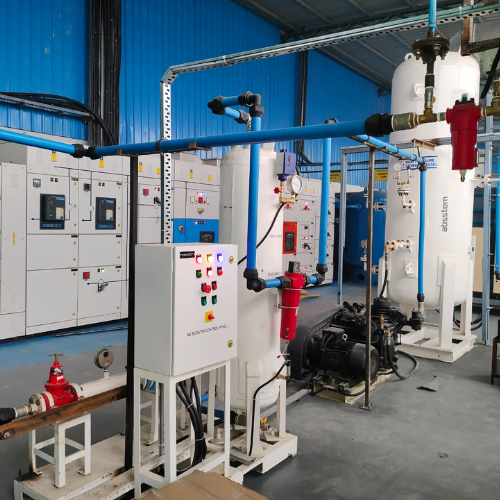In today’s world, the importance of oxygen cannot be overstated. From life-saving medical applications to various industrial processes, a reliable source of high-purity oxygen is essential.
One technology that has emerged as a game-changer in oxygen generation is Pressure Swing Adsorption (PSA) technology.
In this comprehensive guide, we will take a deep dive into the inner workings of PSA oxygen generators, breaking down the steps and technology involved.
Understanding the Basics
Pressure Swing Adsorption (PSA) is a separation process used for the production of high-purity gases, notably oxygen. This technology relies on the principle that different gases can be selectively adsorbed by solid adsorbents under pressure. By exploiting this phenomenon, PSA generators can separate oxygen from air efficiently.
The PSA process consists of several key steps, and understanding each of them is crucial to grasp how these generators work:
Step 1: Adsorption
The process begins with air being drawn into the PSA generator. Air is a mixture of various gases, primarily nitrogen (approximately 78%) and oxygen (about 21%). At this stage, the air is passed through a bed of solid adsorbent material or typically zeolite.
The adsorbent material has a high affinity for nitrogen, allowing it o selectively capture nitrogen molecules while letting oxygen molecules pass through. This adsorption process occurs due to the differing affinities and sizes of nitrogen and oxygen molecules.
Step 2: Desorption
After the adsorbent bed becomes saturated with nitrogen, the generator switches to the Desorption phase. During this stage, Nitrogen captured inside the PSA bed is desorb by lowering down the pressure of PSA bed and vented into the atmosphere.
The purpose of this step is to desorb and release the captured nitrogen, preparing the adsorbent bed for the next cycle of adsorption. The generator must ensure that the bed is purged thoroughly to maintain high oxygen purity.
Step 3: Oxygen Recovery
With the adsorbent bed now fully regenerated, it’s ready for the oxygen recovery phase. The generator adsorbs Nitrogen from air and the remaining oxygen is transferred to the storage tank as high-purity oxygen gas. This phase is crucial for achieving the desired oxygen purity.
Step 4: Switching Beds
PSA generators typically have multiple adsorbent beds in operation simultaneously. While one bed is in the adsorption phase, another is in the desorption phase. The switching of beds ensures a continuous supply of oxygen without interruption.
The Technology Behind PSA Generators
The effectiveness of PSA generators lies in the design and control systems that govern the process. Here are some key technological aspects:
Adsorbent Material
The choice of adsorbent material plays a vital role in determining the efficiency and selectivity of the PSA process. Zeolites are commonly used due to their high adsorption capacity and selectivity for nitrogen. The selection of the right adsorbent is critical for achieving the desired oxygen purity levels.
Pressure Cycling
Precise control of the pressure in the adsorbent beds is essential. Pressure cycling is achieved using valves and controllers to switch between the adsorption, purge, and recovery phases. This control ensures that the generator operates efficiently and reliably.
Monitoring and Safety
Modern PSA generators are equipped with advanced monitoring and safety systems. These systems continuously monitor oxygen purity, pressure, and other critical parameters. In case of any deviations from the desired values, alarms can be triggered to alert operators, ensuring safe and consistent oxygen production.
Also read – PSA Oxygen in the Glass Manufacturing Industry: An Ultimate Guide
Conclusion
Pressure Swing Adsorption (PSA) technology has revolutionized the way we generate high-purity oxygen. By harnessing the principles of selective adsorption, PSA generators provide a reliable and efficient source of oxygen for a wide range of applications. Understanding the steps and technology involved in PSA generators allows us to appreciate the crucial role they play in our lives, from healthcare to industry, and beyond. With continuous advancements in technology, PSA generators continue to evolve, providing us with an indispensable resource – oxygen – that we often take for granted.
